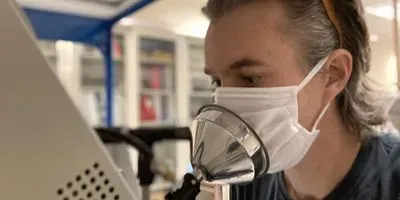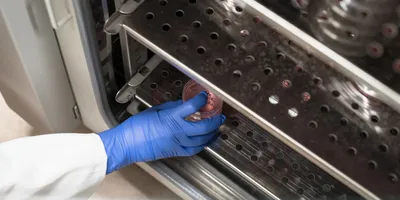
A new study from the University of California, Davis (UC Davis) and the Icahn School of Medicine at Mount Sinai confirms that surgical masks effectively reduce outgoing airborne particles from talking or coughing, even after allowing for leakage around the edges of the mask. The results were published June 8 in Scientific Reports.
Wearing masks and other face coverings can reduce the flow of airborne particles that are produced during breathing, talking, coughing, or sneezing, protecting others from viruses carried by those particles such as SARS-CoV-2 and influenza, said Christopher Cappa, professor of civil and environmental engineering at UC Davis and corresponding author on the paper.
High-efficiency masks such as N95 respirators are designed to have a tight seal to the face, while surgical and most cloth face masks leave small gaps around the sides, which can be reduced when they are worn correctly.
The researchers looked at particles flowing from these gaps by sitting volunteers in front of an instrument that counts airborne particles down to a size of half a micron. The 12 volunteers read aloud or coughed, with and without a surgical mask of the type widely used by the public, either with their mouth directly in front of the funnel of the particle counter, turned to the side, or with their head lowered or raised to count particles passing directly through the mask or leaking around the sides.
The researchers found that wearing a mask while talking reduced particles directly through the mask by an average of 93 percent, from the bottom by 91 percent, the sides by 85 percent, and the top by 47 percent, although with substantial variability between individuals. They got similar results for coughing.
Models to measure leakage
The team used simulations to model the overall reduction in particles due to wearing a mask, allowing for leakage around the edges. They calculated that the overall efficiency of masks was about 70 percent for talking and 90 percent for coughing.
"While air escape does limit the overall efficiency of surgical masks at reducing expiratory particle emissions, such masks nonetheless provide substantial reduction," Cappa said. "Our results confirm that mask wearing provides a significant reduction in the probability of disease transmission via expiratory particles, especially when both infected and susceptible individuals wear masks."
Masks also redirect the flow of air from a high-velocity plume from the talker or cougher towards anybody in front of them, Cappa said.
- This press release was originally published on the University of California - Davis website










